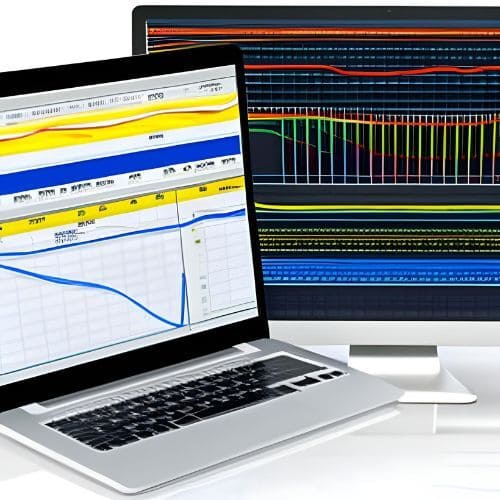Harmonic Study and Analysis
CareLabs offers electrical installation services, including electrical safety inspections, testing, calibration, and certification, in addition to a comprehensive study and analysis of harmonics.
Get Your Harmonic Study Report Now
Contact our experts for trustworthy solutions suited to your company's needs.
Experts will review harmonic hazards, training materials, documentation, and personal protective equipment (PPE) to ensure that your electrical safety program is up-to-date, compliant, and exhaustive. CareLabs is able to identify harmonics early on and take the necessary precautions to reduce their impact, thereby ensuring the security of the apparatus. When there are harmonic electric voltages and currents, electrical systems may become inefficient. They produce inefficient heat and have the potential to diminish power quality. Harmonic voltage analysis is a mathematical method for predicting resonances and harmonic distortion levels. Harmonic voltage analysis is a mathematical method for predicting potential resonances and harmonic distortion levels using empirical data. Harmonic frequencies are introduced into the electrical system by nonlinear electrical switching devices such as AC variable frequency motors, DC drives, fluorescent lighting, and computers. High voltage/current harmonic levels pose a significant risk of apparatus failure. Consequently, it is essential to conduct a rapid harmonic analysis and research. The current harmonic restrictions for 415-volt systems are 5%, with 4% odd harmonics and 2% even harmonics.


Effects of Harmonic Distortion:
- Responsible for both current circulation and high voltage.
- Due to significant voltage distortion, equipment failure and devastation
- Due to an increase in internal energy, there is a decrease in component lifetime and an increase in component failure.
- Branch circuit breakers activate when a malfunction occurs.
- Measurement flaw
- Electrical and distribution network fires and eruptions
- The generator fails
- Reduction in system power factor
- Installation and utility fees that are expensive
- Reduced productivity
- Passivity and needless driving
- Utilization of larger motors
Harmonic issues are extremely rare, but when they do occur, they tend to reduce the power system’s dependability, power quality, and efficiency. Consequently, harmonic investigation and analysis are indispensable.
- Safeguards against current and voltage harmonics
- Frequency variation constraint
- Disparity between voltage and current
- Enhance power factor analysis and maintain a value close to one.
- Controls voltage peaks and valleys
Harmonic research and analysis will help cast light on the probable cause and effect of power quality issues, thereby minimizing harmonic-related problems during the design phase and reducing the risk of unanticipated outcomes.
Harmonic Analysis and Research Workflow at CareLabs:
- Highlight any potential nonlinear loads, capacitor banks, and lengthy medium-voltage cables on the electrical single-line diagram.
- Determine the PCC (point of common coupling).
- Determine which system buses in the facility are susceptible to harmonic distortions.
- Gather harmonics data for every nonlinear load.
- Obtain vital information on the highest and lowest short circuit fault levels for the voltage and current harmonics of the selected PCC.
- Using ETAP (Electrical Transient Analysis Program), examine the harmonics of the electrical network.
- Determine the overall and individual current and voltage wave distortion values of the buses and PCC.
- Create a diagram of the spectrum of harmonic frequencies.
- If harmonic distortion levels are excessive, a suitable mitigation strategy is suggested and implemented.
- After implementing the mitigation plan, rerun the study.
Harmonic Analysis and Research Workflow at CareLabs:
- Highlight any potential nonlinear loads, capacitor banks, and lengthy medium-voltage cables on the electrical single-line diagram.
- Determine the PCC (point of common coupling).
- Determine which system buses in the facility are susceptible to harmonic distortions.
- Gather harmonics data for every nonlinear load.
- Obtain vital information on the highest and lowest short circuit fault levels for the voltage and current harmonics of the selected PCC.
- Using ETAP (Electrical Transient Analysis Program), examine the harmonics of the electrical network.
- Determine the overall and individual current and voltage wave distortion values of the buses and PCC.
- Create a diagram of the spectrum of harmonic frequencies.
- If harmonic distortion levels are excessive, a suitable mitigation strategy is suggested and implemented.
- After implementing the mitigation plan, rerun the study.


Benefits of the CareLabs Service:
If background harmonics have already been measured, higher ratings are used in the second stage.
- Stage 2 permits adjusting the converter size according to the fault level and converter type if the background is less than 25%.
- If the background is between 25% and 75%, the bottom half of the converter grade is acceptable.
- A thorough harmonic analysis is performed on the upper background.
CareLabs has crew members stationed in numerous locations to ensure that personnel is readily accessible in the event of a routine or urgent emergency. CareLabs has made a rapid name for itself as an ISO 9001:2008-accredited company with a loyal consumer who has provided outstanding feedback. In a few significant Chilean communities, including Santiago, Valparaíso, Concepción, and Viña del Mar, we conduct research and analysis on harmonics. Contact us immediately to schedule your harmonic analysis and study in Chile or to receive a quotation!
OUR SERVICES

Analysis


Analysis








